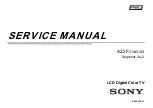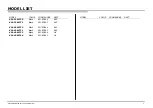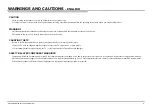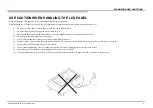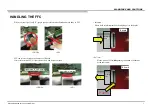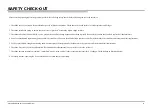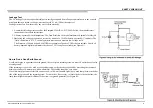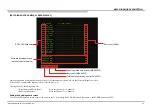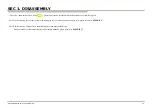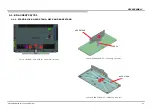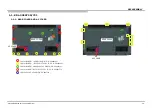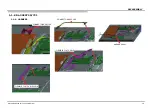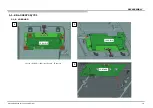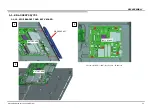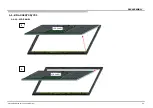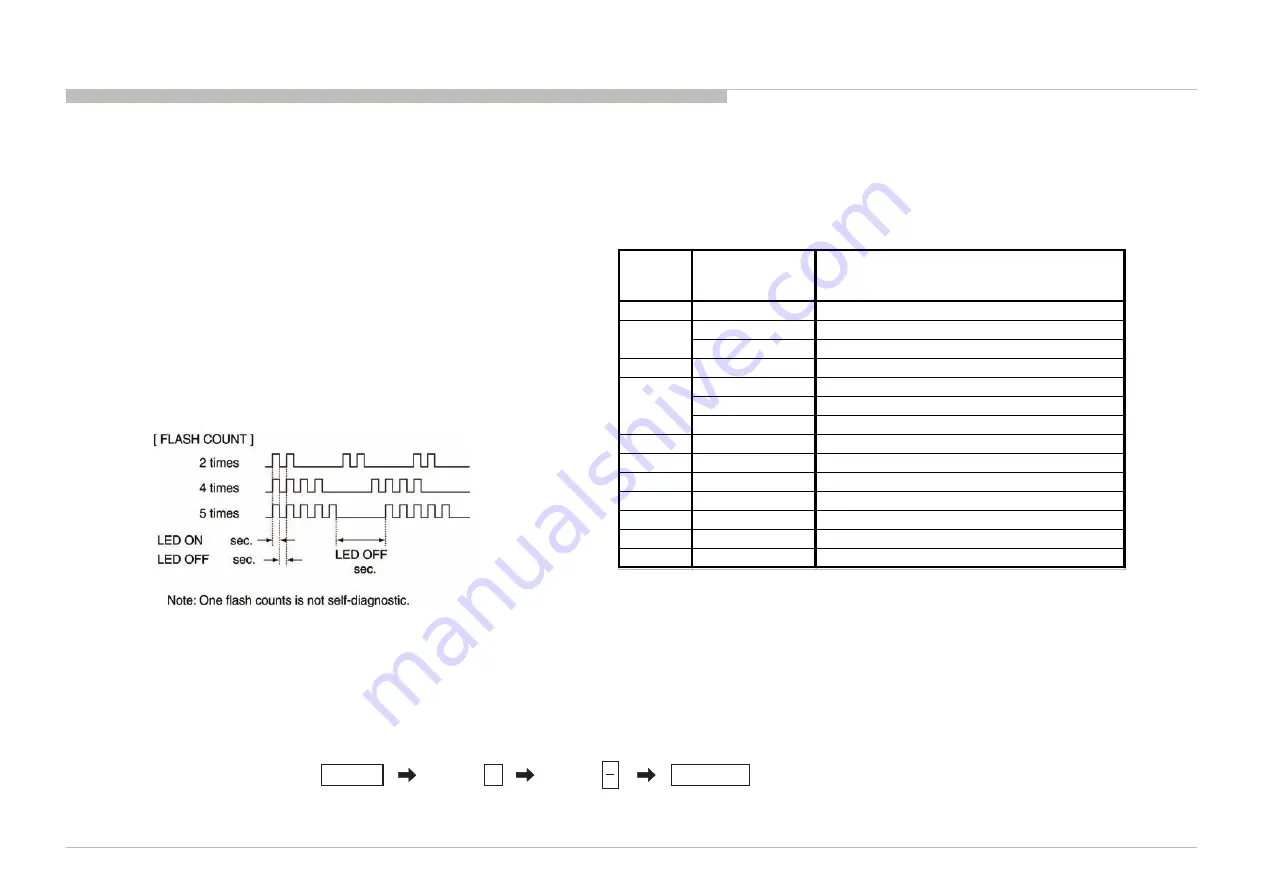
KDL-32/40EX720,721,723,724(AEP/UK)
10
SELF DIAGNOSIS FUNCTION
DIAGNOSTIC TEST INDICATORS
When an error occurs, the STANDBY LED will flash a set number of times to
indicate the possible cause of the problem.
If there is more than one error, the LED will identify the first of the problem areas.
Result for all of the following diagnostic items are displayed on screen.
If the screen displays a “0”, no error has occurred .
The units in this manual contain a self-diagnostic function. If an error occurs, the STANDBY LED will automatically begin to flash.
The number of times the LED flashes translates to a probable source of the problem.
A definition of the STANDBY LED flash indicators is listed in the instruction manual for the user’s knowledge and reference.
If an error symptom cannot be reproduced, the remote commander can be used to review the failure occurrence data stored in memory to reveal past problems and how often these
problems occur.
0.5
0.5
3
DISPLAY OF STANDBY LED FLASH COUNT
SELF-DIAGNOSTIC SCREEN DISPLAY
For errors with symptoms such as “power sometimes shuts off” or “screen sometimes goes out” that cannot be confirmed, it is possible to bring up past occurrences of failure for
confirmation on the screen:
[To Bring Up Screen Test]
In standby mode, press buttons on the remote commander sequentially in rapid succession as shown below:
5
*
: Note that this differs from entering the service mode ()
*
DISPLAY
TV POWER
Channel
Volume
STBY LED
Flash time
Service menu Item
name
(Screen Display)
Diagnostic Item Description
2
MAIN_POWE
Main Power Over Voltage Protection
DC_ALERT
DC_ALERT
AUD_PROT
Audio Abnormal Detection
4
BALANCER
Panel Balancer Error
TCON_ERR
Not used
HFR_ERR
HFR Error
P_ID_ERR
Panel ID NVM Error
6
BACKLITE
Back Light Error (Panel Inverter)
7
TMP_ERR
Thermal Error
8
-
Software Error
9
-
Not used
10
EMIT_ERR
Emitter Error
11
-
Reserved for BTV
12
-
Not used
3
5
Note: codes 101~104 can be seen on OSD (See Page 11) which are not error
codes for service.


